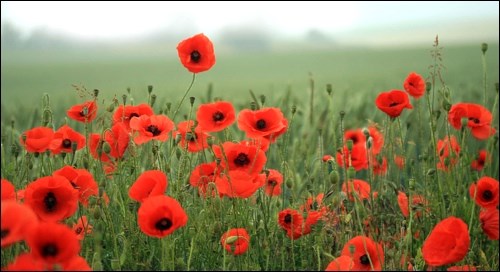Every year when I pick up my poppy from the tray on the News-Optimist front counter and drop in a donation to the Royal Canadian Legion Poppy Campaign, I have to take a trip to Google to look up which side of my jacket I should pin it on.
This year, as I went through that ritual, I found a quote from a Royal British Legion spokesman, who said there is no right or wrong side, “other than to wear it with pride.”
So the next time you tsk tsk about the poppy’s “incorrect” replacement, take another look and give the person marks for wearing the poppy and honouring its significance.
A co-worker said she had heard it was not proper to pin the often-lost poppy on with a Canadian flag pin with a back. According to guidelines posted online by the Royal Canadian Legion that is untrue.
Here’s what the Legion recommends:
• A poppy should be worn on your left breast, over the heart.
• Poppies should only be worn between the last Friday in October and sundown on Nov. 11.
• It is perfectly acceptable to replace the pin in your poppy with a Canada flag. The Legion’s Poppy Campaign uses L-shaped pins rather than pins with a back in order to keep costs down.
• After being worn, poppies should either be attached to a wreath at your local cenotaph following a Remembrance Day ceremony, or stored at home.
• There are no rules about displaying poppies at home, that’s a purely personal choice.
The wearing of poppies as a remembrance to those who have died in service of their country began in 1922, a few years after the end of the War to End all Wars.
Of course war did not end with the First World War armistice on Nov. 11, 1918. That war was brutal, fought in mud-filled trenches, in the air and on the water, resulting in 40 million casualties. It is estimated there were 15 to 19 million dead and 23 million wounded military personnel. It saw the first large-scale use of chemical weapons in warfare in history. That was a horrific development and millions suffered long-term effects.
While chemical weapons were not used in the field by Allied forces in the Second World War, new horrors arose from that conflict, culminating in the dropping of atomic bombs on Japan. It is estimated the cost of that war was 40 to 80 million lives. The higher figure includes deaths from war-related disease and famine. Not all casualties of war fall on the battlefield.
Those historic conflicts were followed by the Korean War, the Vietnam War (reenter chemical weapons in the use of defoliant Agent Orange), Gulf War, war in Afghanistan and internal struggles in many countries around the world. The Cold War also saw deployment of Canadian resources to foreign postings in an effort to keep citizens safe from perceived threats.
As a member of the latter phase of the Baby Boomer generation, I have not seen my country go to war on the scale that occurred in the first half of the 1900s. From my sheltered viewpoint it is hard to imagine the devastation suffered by so many families across this country and others who lost loved ones to conflict.
I can, however, feel gratitude and admiration for those who have gone to war and those who stand for us today, ready to defend my right to enjoy the freedom to live in comfort and even the right to fill this space in the newspaper with words I have chosen, not those chosen for me.
Those freedoms are precious to all Canadians and we thank those who fought and continue to fight to keep them.
This Nov. 11, take time to remember those who have made the supreme sacrifice in defence of democracy and our way of life.




